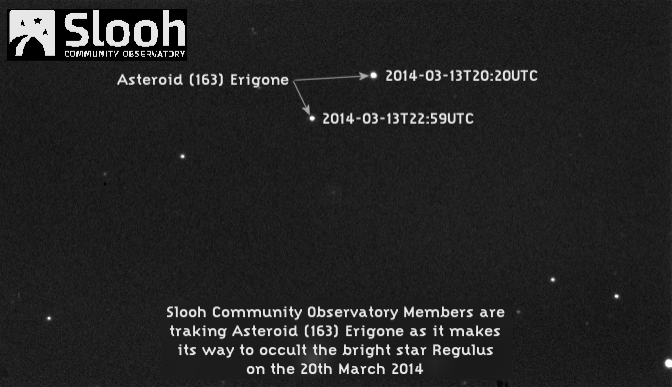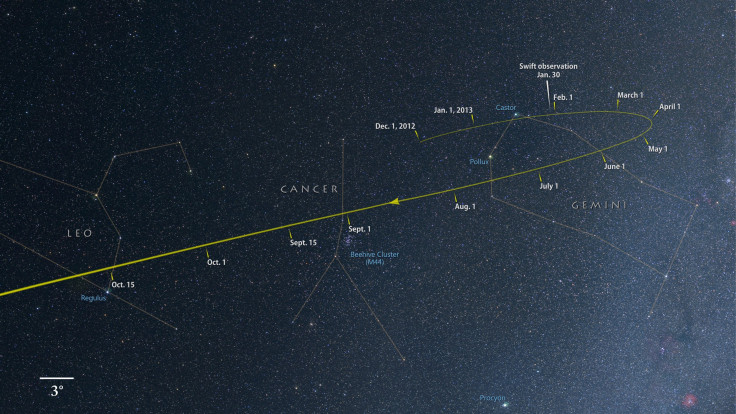What Is Occultation? Massive Asteroid 163 Erigone To ‘Black Out’ The Bright Star Regulus
On March 20, a 45-mile wide asteroid will pass in front one of the brightest stars in the night sky. The process is called occultation and may be the source of some great night-time viewing experiences.

Occultation occurs when an object, in this case an asteroid, blocks another object, the star Regulus, from the view of the observer. To the observer, the asteroid appears to be larger than the star because it is closer to Earth. An occultation can cause an eclipse, like when the moon passes in front of the sun for a solar eclipse, while other types of eclipses can occur when an object passes into another object’s shadow and disappears from view.
In the upcoming occultation, asteroid 163 Erigone, which originates from the main asteroid belt between Mars and Jupiter, will cross in front of Regulus and will be blacked out by the asteroid’s shadow for up to 14 seconds.

Regulus, brighter than the sun, is also the brightest star in the constellation Leo, and is located about 78 light years from Earth. Based on apparent magnitude, Regulus is the 22nd brightest star in the sky as seen from Earth. Thursday's occultation will help astronomers gain new insight into the size and shape of asteroid 163 Erigone.
Thursday’s occultation is not the first of 2014, nor will it be the last. Earlier in the year, the moon occulted Saturn, creating a spectacular image of Earth’s satellite “eating” the second largest planet in the solar system. Colin Legg, a photographer from Australia, captured the lunar occultation on Feb. 22, notes Slate. The moon will occult, based on location, Saturn a few more times during the year while several asteroids will occult different stars throughout 2014, none of which will be as bright as Regulus, reports Universe Today.
© Copyright IBTimes 2024. All rights reserved.






















